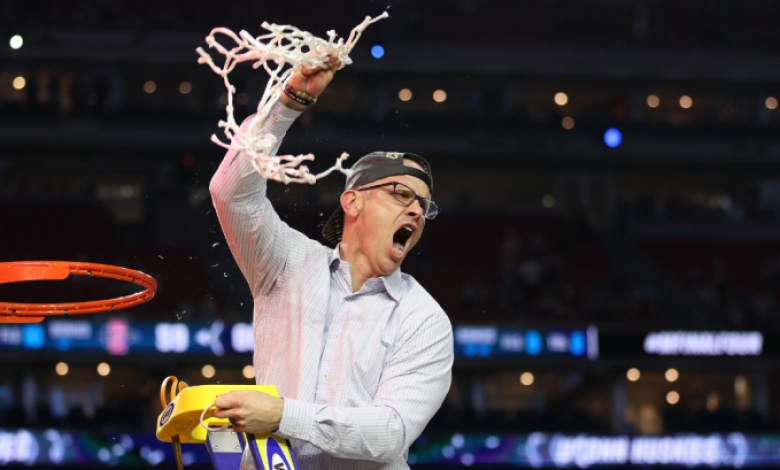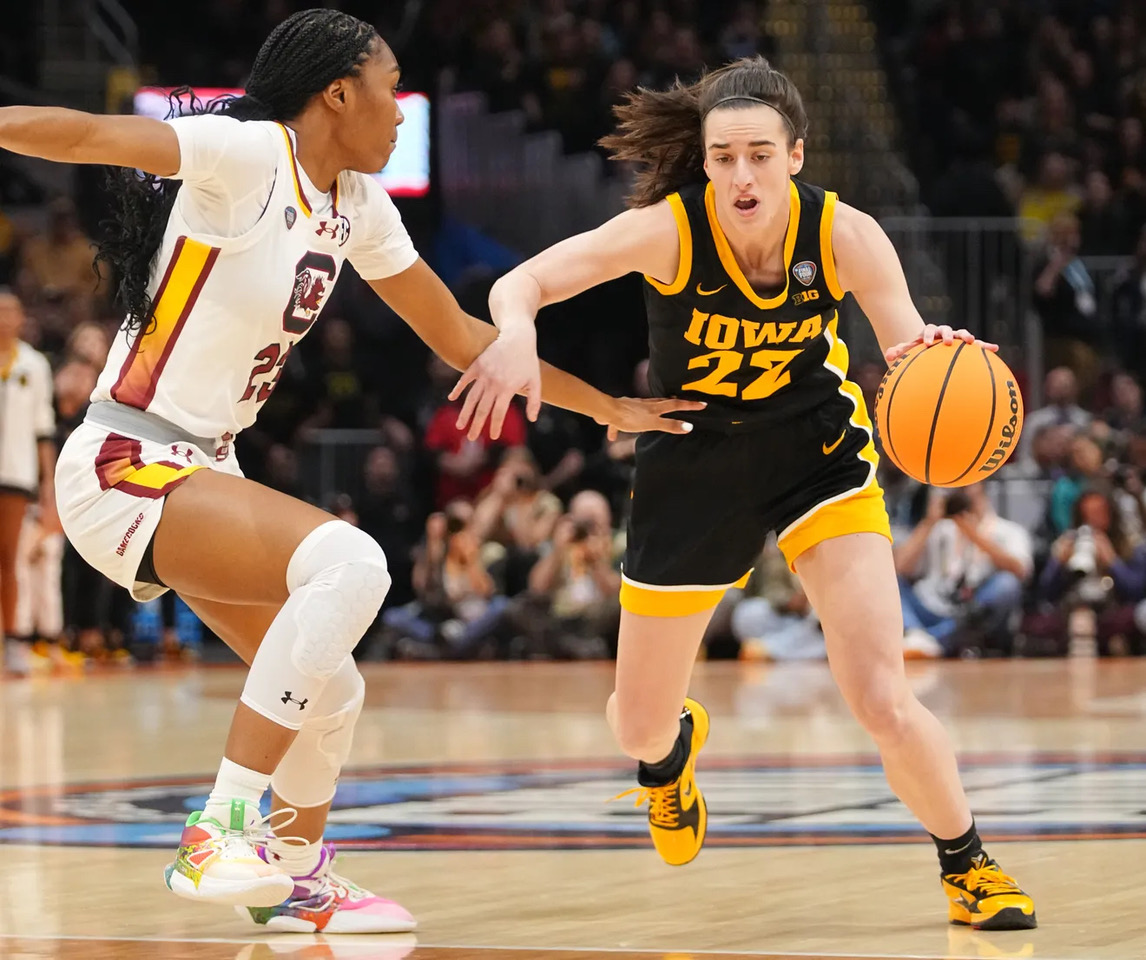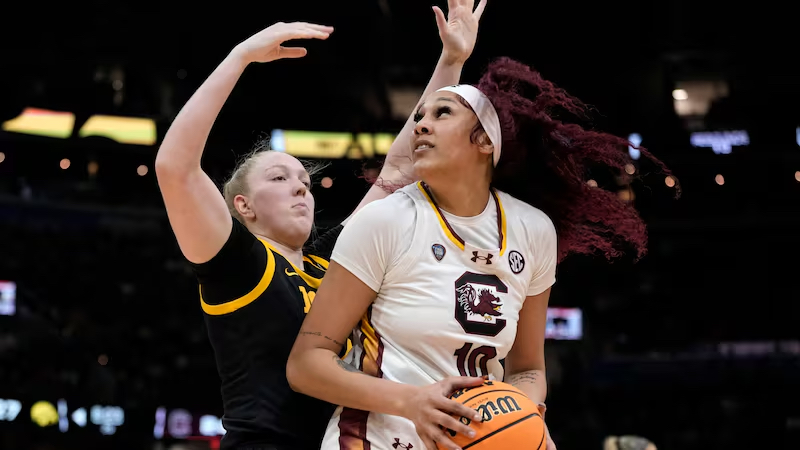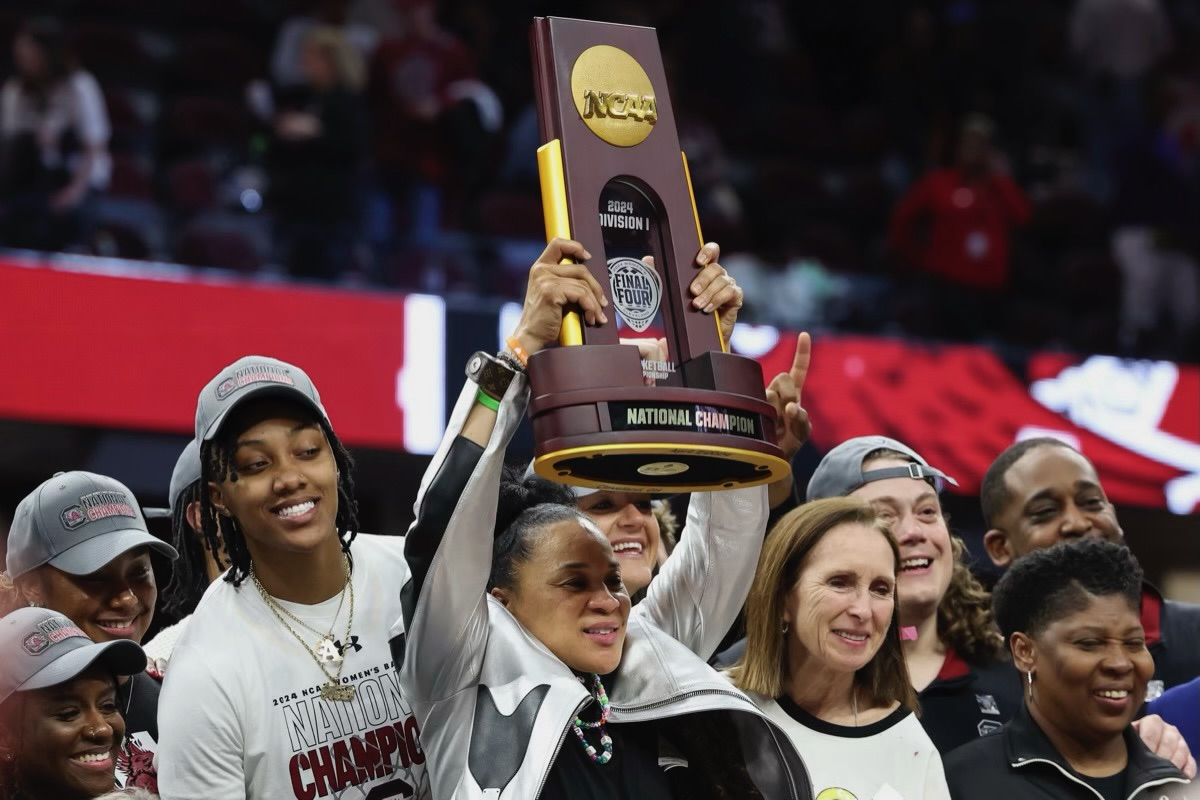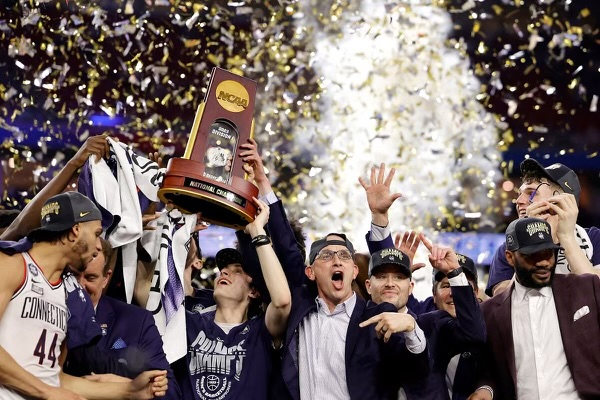The Future of Basketball is Here
For the first time ever the Final Four capping March Madness was no longer the sole province of men’s basketball.
The women crashed the party in a way unlike any other, and it looks like it’ll be a permanent phenomenon.
It actually started when the Iowa women’s team beat defending champion LSU, when 12.3 million people viewed the game on TV.
And those numbers only went up.
The centerpiece was Iowa’s Caitlin Clark, the most celebrated college player of the year who became the sport’s all-time leading scorer.
She was the draw that lured millions, including myself, to pay attention to the women’s game for the first time.
But as is the case so often in the NCAA tournament, bubbles burst, and the final results don’t often bring with them a storybook finish.
Clark and her Hawkeye teammates reached the championship game only to be beaten by the undefeated South Carolina Gamecocks, the strongest women’s team at the start and at the end.
In the final, Iowa stormed out to a 10-0 lead and at one point Clark scored 13 straight points for the Hawkeyes.
But South Carolina owned the inside game, and sparked by Kamilla Cardoso, the 6-foot 7-inch center from Brazil, and a transfer from Syracuse, the Gamecocks outrebounded Iowa 49-25 and dominated offensive rebounding 17-5 giving them second chances on missed shots.
Cardoso was voted the Most Oustanding Player, scoring 15 points and a career-high 17 rebounds. South Carolina wound up 38-0, avenging a loss to Iowa in last year’s Final Four.
They also had a big edge in depth as the Gamecocks bench outscored the Hawkeyes reserves, 37-0.
Winning their second National title in 3 years and 3d overall, South Carolina, 74-1 the last two seasons owns women’s college basketball.
Imagine, summing up the women’s tournament before the men’s is something I never imagined, but this year, I believe it fits.
There was no surprise in UConn’s convincing triumph over Purdue, 75-60, for their second straight national championship last accomplished by Florida in 2006 and 2007.
The Huskies were overwhelming in beating every opponent by double-digits and often opening up 30 point leads in their games.
There is no question they were the best team in the NCAA tournament. Credit to their head coach Dan Hurley, who never allowed a hint of a letdown in any of their six games.
In the final against the Boilemakers, the only a question was whether their 7-foot 4-inch giant Zach Edey would be too much for Connecticut who really had no one player to match him.
Edey who never comes out of the game, scored 37 points, snared 10 rebounds and went to the free throw line 25 times.
He missed 10 of them but that wasn’t the issue for Purdue.
They simply could not hit 3-point shots (1-7), and were outplayed against the UConn guards.
One good man has never beaten five good men in basketball and that was the case in the title game.
A casual observer might point out that the men’s final was anti-climactic. But that would be unfair.
Ask those who play and coach and they’ll tell you it’s hard to win a game. It’s never a foregone conclusion. It takes ability, of course. But it also takes concentration, dedication and focus.
Connecticut has all that and more.
They have winning players, and a perfect coach.
It’s nothing new in Storrs, CT, where Jim Calhoun once ruled the roost and led the Huskies to three national crowns.
It’s taken a little over a decade to pick up where they left off.
But Dan Hurley has certainly taken the baton nicely.
For the first time ever, two schools, Connecticut and North Carolina State placed both their men’s and women’s teams in the Final Four.
The N.C. State women were eliminated by the eventual champions from Columbia, SC and the hopeful extension of a remarkable post-season run by the Wolfpack men came to a halt in the semi-final by Purdue, who proved too much for a team that came out of nowhere to keep their Cinderella story alive.
N.C. State had no chance of even earning a spot in March Madness parade, but they won five games in five days to win the Atlantic Coast Conference tournament, their only path to the Big Dance.
They continued to win once the tournament got underway and reached the Final Four having captured nine consecutive victories, when one defeat would have knocked them out.
So, another bubble burst.
Then, there were the in-game incidents, and off-court comments that were a part of the Final Four flavor.
The most prominent was the controversial foul call in the women’s semi-final against UConn’s Aaliyah Edwards for setting an illegal screen with the Huskies on the attack trailing Iowa by a single point with 3.9 seconds remaining. It was a call that was scrutinized as to whether it was indeed an illegal screen and whether that kind of foul should even be called at that stage of the game.
To explain, in basketball, players on offense move and then hold their position making it difficult for the defense to chase a player with the ball who use that screen to shoot. It is common in the sport, but when the screening player moves or steps out and makes contact with a defender, it is a foul.
I thought there was movement by Edwards, and an Iowa player chasing the player with the ball was knocked off stride.
I know it’s not easy to read about this and not see, but we have no choice.
The larger issue is, should such a foul even be called in the final, crucial moments of a game.
It goes for any sport, including football, where a questionable call of pass interference on a big play, for example, should not draw a flag.
My question is, should fouls be called or avoided depending on the stage of the game?
There’s always been the adage, let the players play.
If so, what can players get away with using that philosophy?
Is it right for officials to decide a game with a call?
I don’t think we’ll ever come to a conclusion on that question.
One thing all coaches and players realize.
There are things that happen long before that critical call, and I’ve never seen a coach blame their loss on an officials’ ruling.
After the game, Paige Bueckers, the UConn star flatly said the call against her team was not the reason they lost.
If the Huskies had done things better earlier, the game would not have come down to that moment.
Then there is the off-court comment by Donna Turasi, a three-time NCAA champion at Connecticut and a two-time Most Outstanding Player in the Final Four who has gone on to become one of the greatest players in WNBA history. In her remarks about Caitlin Clark,
she said, “Reality is coming. You look superhuman playing against some 18-year olds but you’re going to come to play with some grown women that have been playing professional basketball for a long time”.
What Turasi said was totally true.
But why throw a wet blanket to what Caitlin Clark has achieved on the college level?
It could be sour grapes from Iowa’s victory over UConn in the semifinal. Just sayin’.
In any event it was an inappropriate thing to say.
At the same time, South Carolina’s winning coach Dawn Staley saluted Clark saying she had uplifted the women’s game and would be the ideal number one draft choice in the WNBA which she will be unquestionably.
March Madness never fails to deliver.
There are buzzer-beaters and shocking upsets every year.
It’s the nature of the one-and-done tournament format.
Win and advance, lose and go home.
Ultimately, more often than not, the best teams prevail.
That was the case this year.
In men’s play, UConn was the top-seed and rated the best when March Madness began, and they were the ones standing at the finish.
South Carolina, which never lost a game, were considered the very best when it started, and cut down the nets as champions when that final game ended.
But make no mistake, the women’s college game was elevated to a perch that will only grow.
The attraction of their game will continue to draw millions of viewers like it never has before.
Her team didn’t win the national championship, but you can thank Caitlin Clark for putting the women’s version of March Madness on the map to stay.


